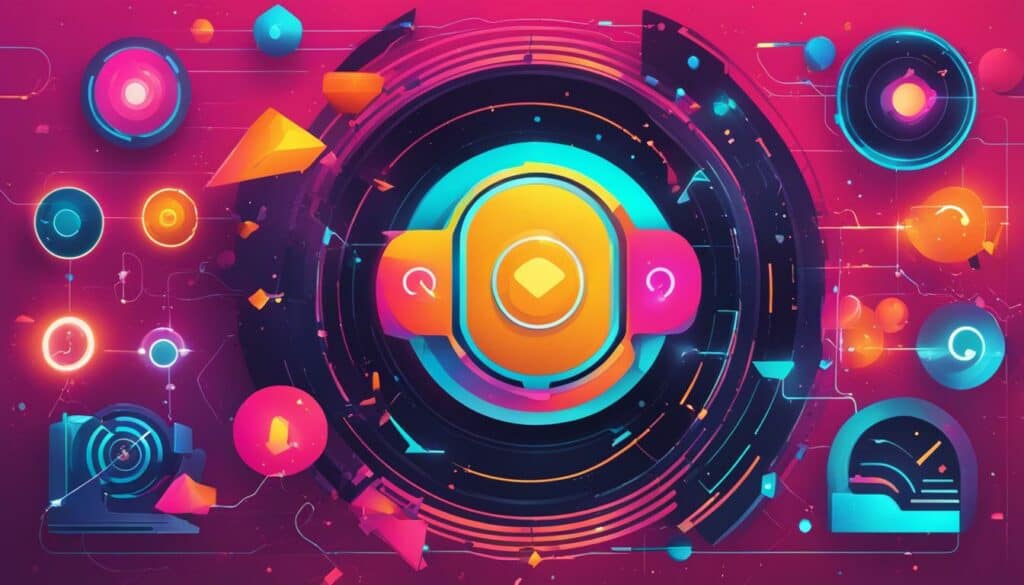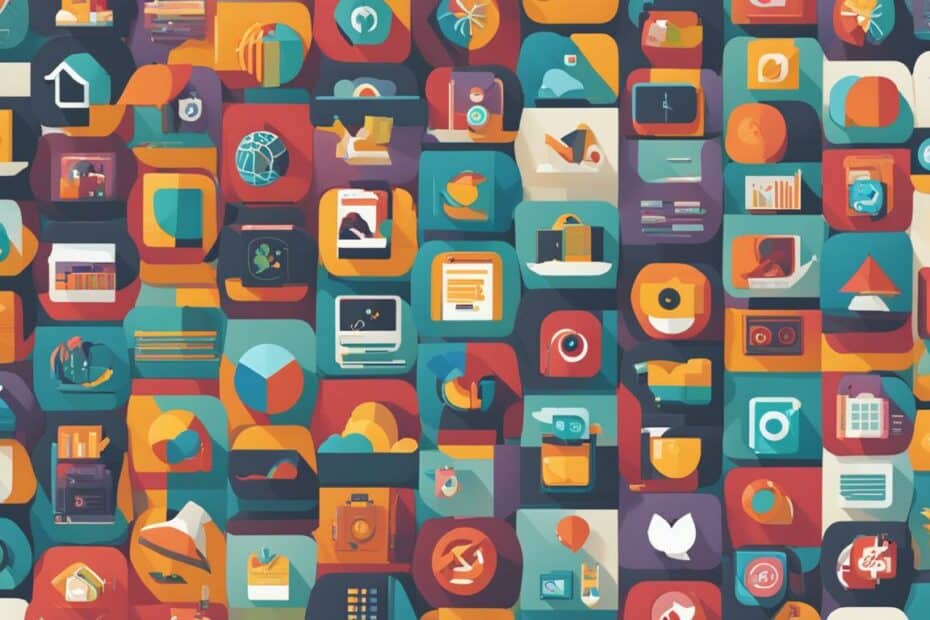This article provides an in-depth comparison between ChatGPT Plus vs ChatGPT vs alternatives, both paid and free, that can be tested as potential substitutes.
ChatGPT has become a popular tool for businesses and individuals looking for AI-powered chatbots.
However, due to high demand, it often faces capacity issues and limited availability. As a result, many users are searching for alternative chatbot options that can provide similar functionalities and features.
By exploring these alternatives, users can find the chatbot that best suits their specific needs and preferences.
ChatGPT Plus vs ChatGPT vs Alternatives: Key Takeaways
- ChatGPT Plus and ChatGPT are popular chatbots, but availability is limited due to high demand.
- Google’s Bard AI offers human-like responses by extracting information directly from the internet.
- Microsoft’s Bing Chat combines a search engine with a chatbot, providing users with relevant web pages and citations.
- Claude 2 stands out for its sleek interface and the ability to analyze uploaded documents.
- ChatSonic offers up-to-date and accurate answers, connected to the internet for real-time information, and AI-generated images.
1. Google’s Bard AI – Best for Human-like Responses
Google’s Bard AI is a noteworthy alternative to ChatGPT for users seeking human-like responses. This AI-powered chatbot stands out for its ability to extract information directly from the internet, providing users with multiple draft responses.
Google’s Bard harnesses the power of advanced language models like PaLM 2, enabling it to generate accurate and detailed answers.
Google’s Bard AI offers human-like responses by extracting information directly from the internet and utilizing advanced language models like PaLM 2.
With its impressive progress, Google’s Bard AI has exhibited the potential to deliver interactions that closely mimic human conversation.
However, it faced initial challenges upon release, including instances where it served incorrect information. Nevertheless, Google has been actively working to improve its accuracy and reliability.
To illustrate Google’s Bard AI’s efficacy in providing human-like responses, consider the following:
| ChatGPT | Google’s Bard AI |
|---|---|
| Reliant on pre-trained data | Extracts information from the internet in real time |
| Offers single responses | Provides multiple draft responses |
| Primary focus on text-based communication | Emphasizes generating nuanced and human-like answers |
As demonstrated, Google’s Bard AI’s utilization of real-time internet data and advanced language models sets it apart from ChatGPT. Its emphasis on providing multiple draft responses contributes to a more interactive and engaging chatbot experience.
You might also be interested in checking out the comparison guide of ChatGPT vs Google Bard.
2. Bing Chat – Best Search Engine + Chatbot Combo
Bing Chat, now known as Microsoft Copilot, is a chatbot developed by Microsoft that seamlessly integrates with the Bing search engine.
This unique combination offers users the ability to access search results, relevant web pages, and citations while interacting with the chatbot, making it an exceptional search engine + chatbot combo.
Bing Chat, as a ChatGPT alternative, stands out for providing concise answers that cater to users’ queries.
Additionally, it offers users the option to choose between creative, precise, or balanced responses, based on their preferences. This level of customization adds a personal touch to the interaction, enhancing the user experience.
One notable feature of Bing Chat is its AI image generator called Bing Image Creator. This tool allows users to generate AI-generated images while conversing with the chatbot.
It provides an enjoyable and visually stimulating dimension to the conversation, making it engaging and interactive.
However, it’s important to note that Bing Chat has a limitation when it comes to the number of prompts per session.
Users may need to ensure that their queries and interactions are within the available limits to fully leverage this chatbot’s capabilities.
In summary, Bing Chat, also known as Microsoft Copilot, offers a unique combination of a search engine and a chatbot. Its integration with the Bing search engine provides users with access to a wealth of information while interacting with the chatbot.
With its concise answers, customizable response options, and the inclusion of an AI image generator, Bing Chat presents a compelling alternative to ChatGPT for users seeking a search engine + chatbot combo.
3. Claude 2 – Sleekest Interface and Concise Answers
When it comes to AI chatbots, Claude 2 developed by Anthropic is a standout alternative to ChatGPT. With its sleek user interface and superior functionality, Claude 2 offers a seamless chatbot experience to users.
One of the key features that sets Claude 2 apart is its ability to analyze uploaded documents.
Unlike ChatGPT, Claude 2 excels in handling large prompts and producing longer documents with ease. This makes it an ideal choice for users who require comprehensive and detailed responses.
Anthropic, the developer behind Claude 2, has received a significant investment from Google. This partnership has resulted in innovative features and improved usability, ensuring users have a top-notch experience when interacting with the chatbot.
With its sleek interface and advanced capabilities, Claude 2 offers users a powerful AI chatbot alternative that delivers concise and accurate answers.
However, it’s important for users to exercise caution when inputting sensitive information into any AI chatbot, including Claude 2.
Privacy considerations should always be a priority, and it’s advisable to refrain from sharing confidential or personal data.
Key Features of Claude 2:
- Sleek user interface
- Analyzes uploaded documents
- Handles large prompts and produces longer documents
- Improved usability through Google partnership
Experience the sleekness of Claude 2’s interface and enjoy concise answers to your queries. Try it today and witness the seamless integration of AI technology into your conversations.
| Features | Claude 2 | ChatGPT |
|---|---|---|
| User Interface | Sleek and intuitive | Simple and user-friendly |
| Document Analysis | ✓ | ✗ |
| Prompt Handling | Handles large prompts and writes longer documents | May face limitations with length and complexity |
| Usability | Improved through Google partnership | Standard functionality |
4. ChatSonic – Best for Up-to-date, Accurate Answers and Images
ChatSonic, created by WriteSonic, is an AI chatbot that serves as an excellent alternative to ChatGPT. This innovative platform is widely known for its AI content generation capabilities.
With its ability to access real-time information from the internet, ChatSonic provides up-to-date and accurate answers to user queries.
One unique feature of ChatSonic is its capability to generate AI-generated images, adding a visual dimension to conversations.
Whether it’s a product image, an illustration, or a graph, ChatSonic can deliver the desired visuals to enhance the user experience.
The platform offers various personas, catering to users seeking specific types of responses.
Whether it’s a philosophical conversation or a comedic interaction, ChatSonic can adapt to different conversational styles, making it an ideal choice for diverse user preferences.
With its commitment to delivering reliable and precise information, ChatSonic ensures that users receive accurate answers to their queries.
Its integration with WriteSonic’s AI technology enhances its capability to generate high-quality content, resulting in more engaging and informative conversations.
Explore the power of ChatSonic and unleash its potential to provide up-to-date answers, accurate responses, and captivating images in your next chatbot experience.

| Features | Benefits |
|---|---|
| Real-time information | Stay updated with the latest data and insights. |
| AI-generated images | Enhance conversations with visually appealing content. |
| Customizable personas | Adapt the chatbot’s responses to suit diverse communication styles. |
| Precision and accuracy | Receive reliable and trustworthy answers to queries. |
5. OpenAI Playground – Best for Customization and Experimentation
The OpenAI Playground is a highly versatile tool that provides users with ample opportunities to experiment with AI language models.
As a ChatGPT alternative, it offers a unique platform for customization and experimentation, allowing users to explore the capabilities of various AI chatbots.
Whether you’re a developer seeking to fine-tune the language models or a curious user interested in understanding the intricacies of AI chatbot conversations, the OpenAI Playground provides a user-friendly interface to cater to your needs.
One of the key advantages of the OpenAI Playground is its extensive customization options. Users can select specific language models suited to their requirements, tailoring the chatbot’s responses to align with their desired tone and style.
Furthermore, it allows for the adjustment of frequency penalties, offering control over the chatbot’s generation process and resulting in more refined and contextually accurate responses.
For developers, the OpenAI Playground serves as a valuable sandbox for testing and refining AI language models.
It provides a safe and controlled environment to experiment with different prompts and observe the output, allowing for continuous iteration and improvement.
With its user-friendly interface and powerful customizability, developers can dive deep into the capabilities of AI chatbots and push the boundaries of what they can achieve.
Key Features of OpenAI Playground:
- Extensive customization options for fine-tuning language models
- Control over frequency penalties to refine responses
- User-friendly interface for easy experimentation
- A safe environment for developers to test and iterate
The OpenAI Playground empowers users to explore AI language models and personalize the chatbot experience according to their specific requirements.
Its customization features and experimentation capabilities set it apart as a remarkable alternative to ChatGPT, providing ample opportunities for developers and users alike to harness the full potential of AI chatbots.
6. Gemini: Advancing AI Technology
Gemini, developed by OpenAI, is an AI technology that aims to combine various advancements in the field. This innovative system is designed to enhance the capabilities of AI models, pushing the boundaries of what they can achieve.
Gemini holds promise for improving language understanding, task completion, and overall AI performance.
7. Microsoft Copilot: Empowering Developers
Formerly known as Bing Chat, Microsoft Copilot brings together the power of OpenAI’s GPT-4 and offers code suggestions for developers.
By integrating advanced AI capabilities, Microsoft Copilot aims to streamline the coding process, providing valuable insights and assistance to developers as they write code (be sure to check out the article: Can ChatGPT replace programmers and developers?).
This chatbot is designed to enhance productivity and support developers throughout their coding journey.
8. GPT-4: The Next Generation Model
OpenAI’s GPT-4 represents a significant leap forward in AI language models.
With improved human-like responses and enhanced visual understanding, GPT-4 showcases the cutting-edge progress being made in the field of AI.
This upgraded model opens up new possibilities for natural language processing and comprehension, facilitating more interactive and engaging conversational experiences.
9. NeevaAI: Personalized Search with Enhanced Privacy
NeevaAI is an AI-powered search engine that prioritizes personalized search results while ensuring user privacy. Unlike traditional search engines, NeevaAI focuses on delivering relevant and meaningful search results without compromising privacy.
By harnessing AI technology, NeevaAI aims to create a more intuitive and privacy-driven search experience for users.
These AI updates exemplify the ongoing advancements and breakthroughs in the field.
From pushing the boundaries of AI capabilities with Gemini to empowering developers with Microsoft Copilot, the AI landscape continues to evolve rapidly.
GPT-4 showcases the impressive progress in generating human-like responses and visual understanding, while NeevaAI offers a new paradigm in personalized search with enhanced privacy.
The future of AI is bright, promising exciting possibilities and transformative applications.

[Image Description: Image representing the cutting-edge advancements and updates in the field of AI].
10. QuillBot
QuillBot is an AI-powered tool designed to improve writing. It provides assistance by paraphrasing and generating suggestions, enhancing the overall quality and creativity of written content.
Recommended reading: Will ChatGPT replace human writers?
11. Wix ADI (Artificial Design Intelligence)
Wix ADI is an AI tool developed by Wix that simplifies the process of website design and creation. It assists users in creating professional-looking websites by offering customized design suggestions and automatically optimizing layouts.
12. Otter.ai
Otter.ai is an AI transcription and note-taking tool that simplifies the process of generating transcriptions from audio recordings (read the complete Otter AI review).
It uses AI technology to automatically transcribe recordings and offers features like keyword identification and highlight summaries for efficient note-taking.
13. Browse.ai
Browse.ai is an AI research assistant that aids users in finding relevant academic papers and articles.
With its advanced search capabilities, Browse.ai streamlines the research process by providing accurate and targeted results, saving time and effort.
14. Elicit
Elicit is an AI language model specifically designed for natural language processing tasks.
It provides intelligent insights and comprehensive analysis of textual data, making it a valuable tool for tasks such as sentiment analysis, entity recognition, and text classification.
These platforms expand the options available to users seeking AI-powered solutions beyond ChatGPT.
With their unique capabilities, QuillBot, Wix ADI, Otter.ai, Browse.ai, and Elicit offer diverse functionalities and assist users in different areas of their work.
FAQ
What are some alternatives to ChatGPT?
Some alternatives to ChatGPT include Google’s Bard AI, Bing Chat (Microsoft Copilot), Claude 2, ChatSonic, and OpenAI Playground.
What is Google’s Bard AI known for?
Google’s Bard AI is known for providing human-like responses to user queries and extracting information directly from the internet.
What is Bing Chat?
Bing Chat, now known as Microsoft Copilot, is a chatbot developed by Microsoft that integrates with the Bing search engine.
What are the unique features of Claude 2?
Claude 2 stands out for its sleek user interface, ability to analyze uploaded documents, and capability to handle large prompts and write longer documents.
What is special about ChatSonic?
ChatSonic is an AI chatbot that offers up-to-date and accurate answers, generates AI-generated images, and provides various personas.
What can users do with OpenAI Playground?
OpenAI Playground allows users to experiment with AI language models, customize options, and explore the capabilities of AI chatbots.
What are some recent updates in AI technology?
Some recent updates in AI technology include Gemini, Microsoft Copilot, GPT-4, and NeevaAI, showcasing advancements in AI models, code suggestions, improved responses, and personalized search results.
Are there other useful AI platforms?
Yes, other useful AI platforms include QuillBot, Wix ADI, Otter.ai, Browse.ai, and Elicit, which offer features like paraphrasing, website design assistance, transcription, note-taking, and natural language processing tasks.
How should users select a ChatGPT alternative?
Users should assess their specific needs and preferences when selecting a ChatGPT alternative, considering factors like response style, features, customization options, and intended use cases.
Conclusion: ChatGPT Plus vs ChatGPT vs Alternatives
In conclusion, when it comes to AI chatbots, users have a range of alternatives to consider alongside ChatGPT Plus and ChatGPT. Each alternative offers unique features and functionalities that cater to different needs and preferences.
Google’s Bard AI stands out for its human-like responses, while Bing Chat (Microsoft Copilot) provides the convenience of integrating a search engine with a chatbot.
Claude 2, developed by Anthropic, boasts a sleek user interface and the ability to handle large prompts and write longer documents.
ChatSonic, created by WriteSonic, offers up-to-date and accurate answers, as well as AI-generated images. OpenAI Playground, on the other hand, is a versatile tool that allows for customization and experimentation with AI language models.
It’s important to note that the field of AI is continuously advancing, and new updates such as Gemini, Microsoft Copilot, GPT-4, and NeevaAI further contribute to the evolution of chatbot technology.
Additionally, other AI platforms like QuillBot, Wix ADI, Otter.ai, Browse.ai, and Elicit offer additional options for various use cases (find out some of the generative AI use cases).
Ultimately, businesses and users should assess their specific needs and preferences when choosing a ChatGPT alternative.
Whether it’s the quest for human-like responses, integration with a search engine, a sleek interface, up-to-date answers, or customization capabilities, the alternatives in the market provide ample choices for a seamless chatbot experience.
